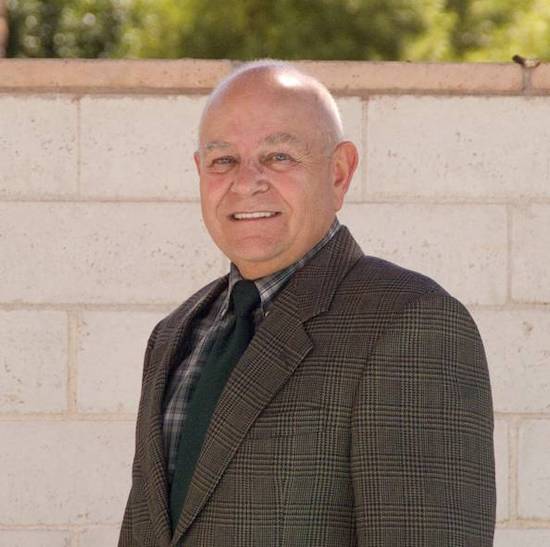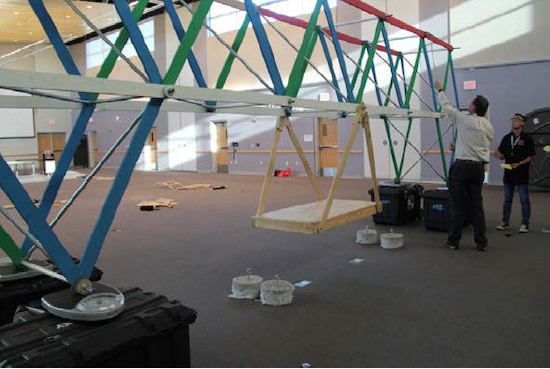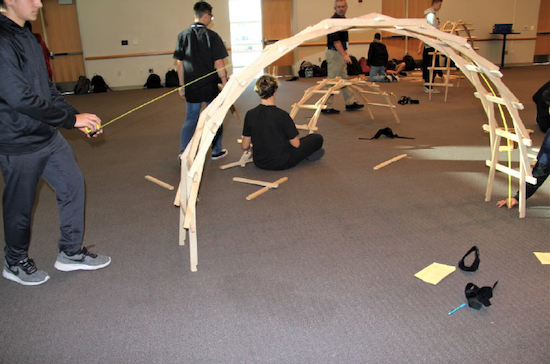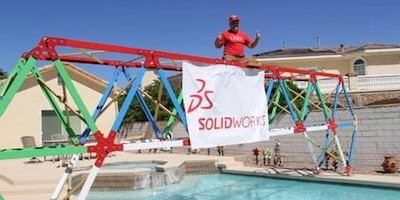Celebrating Engineering Innovation Winner Announced
Richard Williams has spent decades helping students embrace engineering and technology.

Students assemble a truss bridge project designed by contest winner Richard Williams. Images courtesy of Richard Williams.
Engineering Resource Center News
Engineering Resource Center Resources


Dell

Latest News
October 14, 2021
The Advanced Product Development Resource Center (APDRC) has named the winner of the inaugural Celebrating Engineering Innovation contest. Richard Williams of Las Vegas, a retired electrician and former Marine, will receive an NVIDIA Quadro RTX 6000 graphics card in honor of the project designs he has created to help teach engineering concepts to elementary, high school and college students.
Known in the SOLIDWORKS community as Corporal Willie, Williams has been spreading the gospel of technology and engineering throughout Clark County for many years. The Brooklyn native was a union electrician for decades before an on-the-job accident sidelined him in 1998. Although his leg was injured, Williams was not interested in sitting still.
“I wanted to do something that would help society and I wound up throwing my full weight behind education,” Williams says.
 Richard Williams.
Richard Williams.Retiring to Florida, Williams began educating himself on a variety of science and technology interests, and then got involved with the local school district to help teach technology topics.
Along the way, he struck up a correspondence with the late Joe Greco, a well-known CAD advocate and writer, and also connected with Marie Planchard, the leader of the SOLIDWORKS education and early engagement program. He eventually became an enthusiastic SOLIDWORKS user and certified instructor.
Making a Bet on Education
When Williams and his wife relocated to Las Vegas in 2004, he immediately began championing technology education for students there. “I started doing tech talks to inspire, motivate and incentivize kids into thinking about technical careers,” Williams says.
He has also served on the engineering advisory committee for the Northwest Career and Technical Academy in Las Vegas, as well as working closely with the Clark County School District and the University of Nevada, Las Vegas, and the College of Southern Nevada. He has also worked with the Girl Scouts and the local Society of Women Engineers organization.
From there, he began designing and building engineering projects that teachers and professors could use to demonstrate engineering concepts for their students.
Armed with SOLIDWORKS, HSMWorks and a wide array of computers (including Dell systems) and servers that he has compiled with the help of his son, as well as his own well-equipped workshop, Williams has been creating hands-on engineering projects for students. In the process, he has helped spark an interest in STEM fields, and earned himself a wall full of awards.
(The workshop includes a CNC machine, Laguna 3-Axis Mill Router, and a 120 Watt Epilog Laser engraving machine.)
For younger students, Williams has designed a variety of gears, pulleys, levers, weights and other activities to help teach engineering basics. For more advanced students, Williams has created Big Bridge projects, designing and analyzing models in SOLIDWORKS and then fabricating prototypes in his shop. Students can then assemble these projects and test loads and forces on the assembled structure.

He loans out his shop to senior design classes (who do not always have ready access to the necessary tooling to fabricate their projects). For example, he helped a team of university engineering students fabricate a solar-powered pumping rig they had created for a student design competition. He also designed and built four cardboard stools that were able to support more than 1,000 lbs. of weight, and one that set a world record by supporting 1,113 lbs.
Some of the more impressive projects he has created include a self-supporting arch bridge project (based on a Leonardo Da Vinci design), as well as a 26-foot-long Warren Truss Design bridge. He has also designed a number of solar and thermal science projects for the students he works with.
He remains a big advocate of SOLIDWORKS, but adds that “the problem we have now is that as the software progresses and gets bigger and bigger, we need better and better computers.” His son (who is a coronary care nurse as well as a techie) has helped Williams build and maintain the computer infrastructure (including a recently added 66TB storage server)
“These projects take time and effort to make, but the rewards are to allow young people to actually do things that they would not normally do at any time in their lives. Hands on projects work wonders with curriculums to stir up interest and future technical careers. All of this is a work in progress for our schools,” Williams says.


More Dell Coverage

More NVIDIA Coverage
Subscribe to our FREE magazine, FREE email newsletters or both!
Latest News





